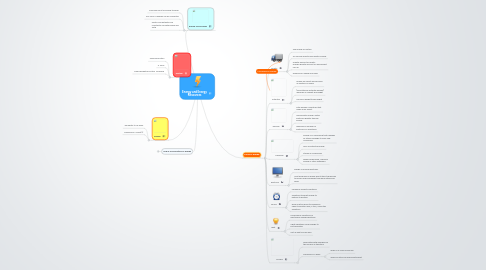
1. Energy Conversions
1.1. Common result of energy transfer
1.2. Any form of energy can be converted
1.3. Kinetic and potential are constantly converted back and forth
2. Energy
2.1. The ability to do work
2.2. Measured in Joules(J)
3. Law of Conservation of Energy
3.1. Energy cannot be created or destroyed
3.2. Total amount in closed system will always stay the same
3.3. Even as type of energy is changed, the amount does not
4. Friction
4.1. Opposes motion
4.2. A force
4.3. Makes perpetual motion imossible
5. Forms of Energy:
5.1. Kinetic
5.1.1. The energy of motion
5.1.2. All moving objects have kinetic energy
5.1.3. Greater amount of kinetic energy=greater amount of work object can do
5.1.4. Depends on speed and mass
5.2. Potential
5.2.1. Energy an object has because of position or shape
5.2.2. (Gravitational potential energy) depends on weight and height
5.2.3. Formula=weight times height
5.3. Thermal
5.3.1. Total energy of particles that make up an object
5.3.2. more kinetic energy=faster particles=greater thermal energy
5.3.3. depends on number of particles in a substance
5.4. Chemical
5.4.1. energy of a compound that changes as atoms rearange to form new compound
5.4.2. form of potential energy
5.4.3. stored in compounds
5.4.4. when bonds break, chemical energy is often releaseed
5.5. Electrical
5.5.1. energy of moving electrons
5.5.2. Most produced in power plants then transferred to homes and businesses through a network of wires
5.6. Sound
5.6.1. caused by objects vibrations
5.6.2. vibrations transmit energy to particle to particle
5.6.3. work must be done to change an object's position and, in turn, cause the vibrations
5.7. Light
5.7.1. Produced by vibrations of electrically charged particles
5.7.2. Light vibrations cause energy to be transmited
5.7.3. Not all light can be seen
5.8. Nuclear
5.8.1. associated with changes oin the nucleus in the atom
5.8.2. Produced in 2 ways:
5.8.2.1. when 2 or more nuclei join
5.8.2.2. When an atom's nucleus splits apart
